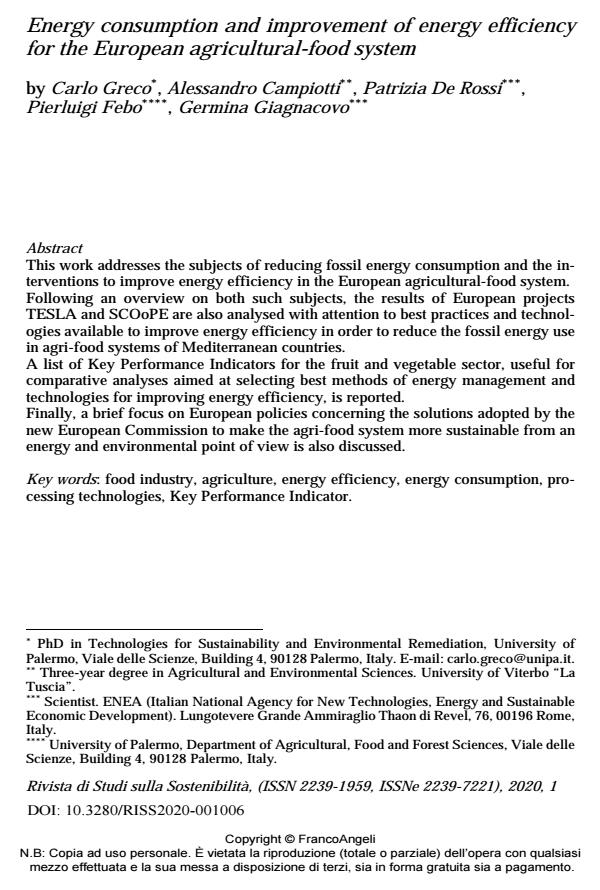Energy consumption and improvement of energy efficiency for the European agricultural-food system
Journal title RIVISTA DI STUDI SULLA SOSTENIBILITA'
Author/s Carlo Greco, Alessandro Campiotti, Patrizia De Rossi, Pierluigi Febo, Germina Giagnacovo
Publishing Year 2020 Issue 2020/1
Language English Pages 13 P. 91-103 File size 306 KB
DOI 10.3280/RISS2020-001006
DOI is like a bar code for intellectual property: to have more infomation
click here
Below, you can see the article first page
If you want to buy this article in PDF format, you can do it, following the instructions to buy download credits

FrancoAngeli is member of Publishers International Linking Association, Inc (PILA), a not-for-profit association which run the CrossRef service enabling links to and from online scholarly content.
This work addresses the subjects of reducing fossil energy consumption and the interventions to improve energy efficiency in the European agricultural-food sys-tem. Following an overview on both such subjects, the results of European projects TESLA and SCOoPE are also analysed with attention to best practices and technologies available to improve energy efficiency in order to reduce the fossil energy use in agri-food systems of Mediterranean countries. A list of Key Performance Indicators for the fruit and vegetable sector, useful for comparative analyses aimed at selecting best methods of energy management and technologies for improving energy efficiency, is reported. Finally, a brief focus on European policies concerning the solutions adopted by the new European Commission to make the agri-food system more sustainable from an energy and environmental point of view is also discussed.
Keywords: Food industry, agriculture, energy efficiency, energy consumption, pro-cessing technologies, Key Performance Indicator.
- Energy Efficient Technologies for Food Safety, Quality, and Security Surendra Prakash Gupta, Arun Bhatt, pp.27 (ISBN:9798369383421)
- Methodological Aspects of the Military-Economic Significance of Agriculture and Modern Problems of Military Food Resources in Ukraine Oleh Semenenko, Ivan Marko, Iryna Chernyshova, Viktoriia Koverga, Roman Pekuliak, in Scientific Horizons /2021 pp.81
DOI: 10.48077/scihor.24(8).2021.81-97
Carlo Greco, Alessandro Campiotti, Patrizia De Rossi, Pierluigi Febo, Germina Giagnacovo, Energy consumption and improvement of energy efficiency for the European agricultural-food system in "RIVISTA DI STUDI SULLA SOSTENIBILITA'" 1/2020, pp 91-103, DOI: 10.3280/RISS2020-001006